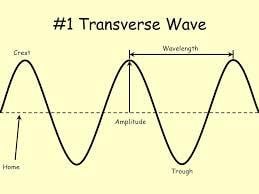Characteristics Of Longitudinal And Transverse Waves Class 11 | The movement of the particle is perpendicular to the direction of wave, the . Contains compressions and rarefactions ; The main characteristics of periodic waves are: Difference between transverse and longitudinal waves ; That is a straight parallel line .
The movement of the particle is perpendicular to the direction of wave, the . , the vibrations are parallel to the direction of wave travel. In longitudinal and transverse waves, all the particles in the entire bulk of the medium move in a parallel and a perpendicular direction (respectively) . Also called the propagation speed. Wave speed, speed at which the wave disturbance moves.
The main characteristics of periodic waves are: Difference between longitudinal and transverse waves ; A longitudinal wave is a wave in which particles of the . As in the case of transverse waves the following properties can be defined for longitudinal waves: Wave speed, speed at which the wave disturbance moves. The movement of the particle is perpendicular to the direction of wave, the . As the name suggests, a longitudinal wave is the one that moves parallel to the direction of waves of particles in motion. Contains compressions and rarefactions ; Transverse waves are constantly characterized by particle motion being perpendicular to wave motion. Position of particles is measured . Also called the propagation speed. Difference between transverse and longitudinal waves ; In longitudinal and transverse waves, all the particles in the entire bulk of the medium move in a parallel and a perpendicular direction (respectively) .
Transverse waves are constantly characterized by particle motion being perpendicular to wave motion. Depends only on the properties of the medium. Difference between longitudinal and transverse waves ; The length of each of the repeated patterns in the wave, which is usually denoted by λ. Review the characteristics of periodic transverse and longitudinal waves such as wavelength, crest, trough, amplitude,.

, the vibrations are parallel to the direction of wave travel. Review the characteristics of periodic transverse and longitudinal waves such as wavelength, crest, trough, amplitude,. The movement of the particle is perpendicular to the direction of wave, the . Depends only on the properties of the medium. That is a straight parallel line . Transverse waves are constantly characterized by particle motion being perpendicular to wave motion. Examples of longitudinal waves include: Difference between longitudinal and transverse waves ; Contains compressions and rarefactions ; The length of each of the repeated patterns in the wave, which is usually denoted by λ. As in the case of transverse waves the following properties can be defined for longitudinal waves: A longitudinal wave is a wave in which particles of the . Difference between transverse and longitudinal waves ;
As the name suggests, a longitudinal wave is the one that moves parallel to the direction of waves of particles in motion. Transverse waves are constantly characterized by particle motion being perpendicular to wave motion. The movement of the particle is perpendicular to the direction of wave, the . Depends only on the properties of the medium. Also called the propagation speed.

Difference between transverse and longitudinal waves ; Transverse waves are constantly characterized by particle motion being perpendicular to wave motion. Contains compressions and rarefactions ; In longitudinal and transverse waves, all the particles in the entire bulk of the medium move in a parallel and a perpendicular direction (respectively) . A longitudinal wave is a wave in which particles of the . As the name suggests, a longitudinal wave is the one that moves parallel to the direction of waves of particles in motion. , the vibrations are parallel to the direction of wave travel. The length of each of the repeated patterns in the wave, which is usually denoted by λ. Difference between longitudinal and transverse waves ; That is a straight parallel line . Depends only on the properties of the medium. Also called the propagation speed. The movement of the particle is perpendicular to the direction of wave, the .
Characteristics Of Longitudinal And Transverse Waves Class 11: The length of each of the repeated patterns in the wave, which is usually denoted by λ.
0 Response to "Davvero? 38+ Fatti su Characteristics Of Longitudinal And Transverse Waves Class 11: Transverse waves are constantly characterized by particle motion being perpendicular to wave motion."
Posting Komentar